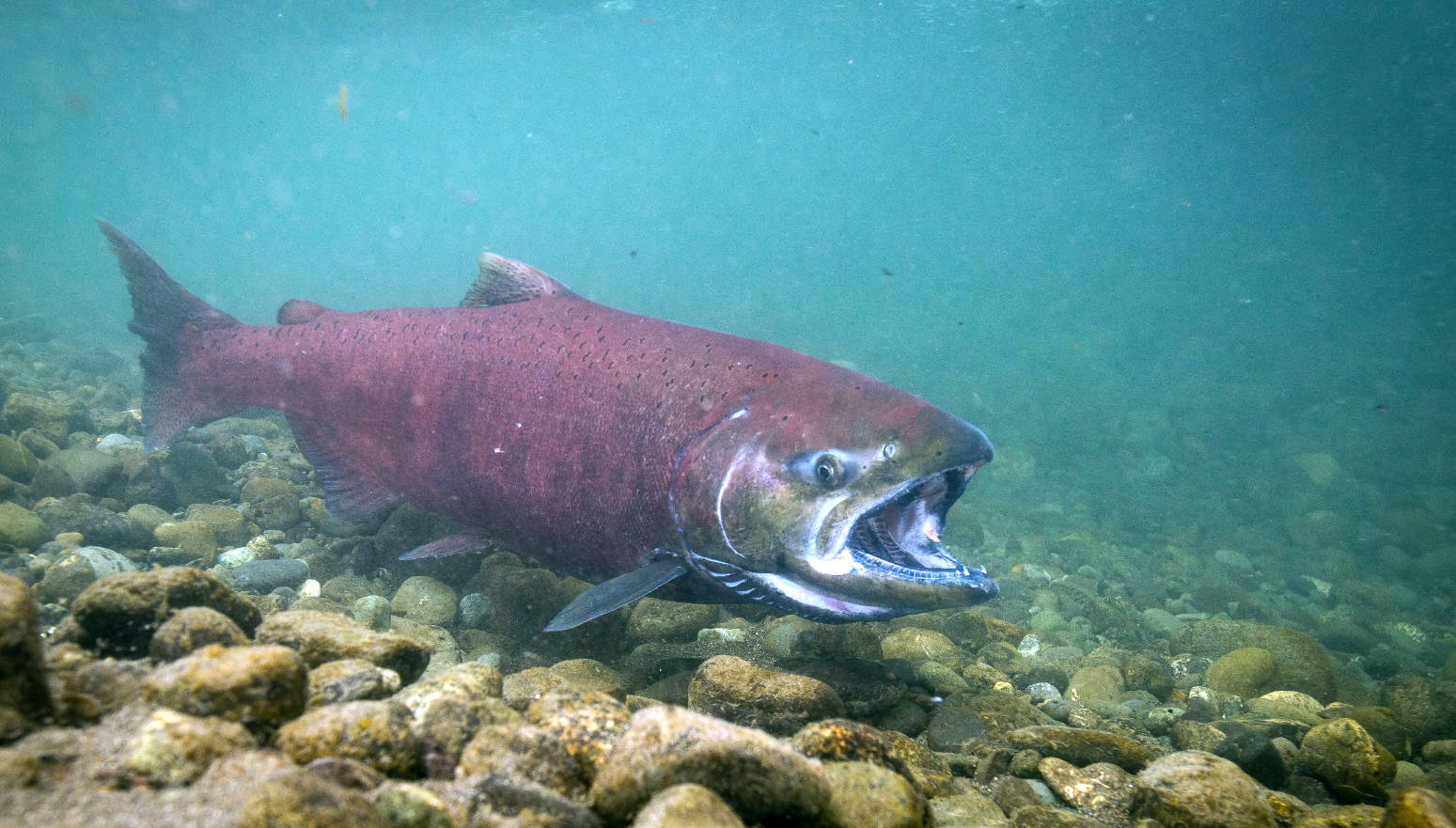Heavy rainfall and above-average stream temperatures contributed to the recent decline of Cook Inlet king salmon, a new study published Monday by the University of Alaska Fairbanks suggests.
The peer-reviewed study, which was published in the scientific journal Global Change Biology, modeled the relationship of nine different indicators, including stream temperatures and precipitation levels, to the populations of 15 of the 23 chinook, or king, salmon populations monitored by Alaska’s Department of Fish and Game within the Cook Inlet.
The study was the first comprehensive look of its kind at the impact of freshwater conditions on chinook salmon in the area, Sue Mauger, one of the study co-authors, said.
“There’s not been any research that has been able to look at the freshwater conditions across many different watersheds that would represent different chinook populations,” Mauger, who is the science and executive director of local environmental advocacy group Cook Inletkeeper, said Wednesday. “So that’s really one of the strengths of this paper: looking at the overall regional story of the decline, and then looking for those watershed-scale drivers that are actually part of the story of why we have that decline.”
Chinook salmon populations across the Cook Inlet have experienced significant fluctuations but overall have been in decline over the past 30 years. The total harvest of king salmon in Cook Inlet peaked at 134,489 fish in 1993, but by 2012 the harvest was only 10,838 fish. A federal fishery disaster was declared that year, and for the past two years king salmon fishing has been heavily restricted on the Kenai Peninsula due to low returns.
The most notable finding from the study showed that maximum rainfall amounts during late summer months, when spawning and incubation take place, had a “strong negative association” with productivity rates for spawning salmon populations.
In other words, heavy rainfall was consistently associated with poor brood years across all 15 chinook populations.
Monthly maximum precipitation was above-average for the majority of the 15 streams during the 2004, 2005 and 2006 brood years, and the timeframe between 2003-2007 saw an average decline in productivity of 57% in these waters.
The heavy rains likely cause increased flooding in waterways, according to the study, which can then damage or displace salmon embryos. Increased deposits of fine sediments in the water can lead to diminished oxygen levels.
While heavy rains appear to have a negative impact on incubating salmon eggs, a slight increase in precipitation was shown to benefit, rather than harm, the juvenile salmon that had already hatched and were spending a year in the freshwater before traveling to the ocean.
“In the summertime we also found that a little more rain can really help the juveniles find some of those side-channel habitats and places where they can maybe feed a little bit out of the main flow of water,” Mauger said.
A relationship was also found between increased temperatures and spawning productivity, although this relationship varied depending on the individual waterway. For the most part, warmer waterways like Alexander Creek and Deshka experienced lower spawning productivity when temperatures were higher than normal, while increased temperatures had no effect on spawning productivity in colder waterways like the Kenai River or the Chulitna River.
Above-average temperatures also had a negative effect on juveniles in warmer waters, but a positive effect on juveniles in colder waters. Mauger said that this indicates there is a “sweet spot” in terms of temperature range where chinook salmon thrive, and increased temperatures have brought some areas closer to that range while pushing other areas outside those bounds.
Adam St. Saviour, Southcentral Region research biologist for ADF&G, is another co-author of the UAF study.
St. Saviour provided departmental data on yearly escapement and ages for chinook populations in order to reconstruct the runs for each year and fit them into the models used in the study. St. Saviour said via email that he also used his knowledge and experience with the local weirs and genetic stock identification projects to help the research group understand the limitations of the data they were using.
St. Saviour noted that the study’s findings “certainly” don’t paint a complete picture of why chinook salmon populations have declined and fluctuated so sharply in recent years, but it does offer a missing piece of the puzzle. For example, while the models established by the study aligned for the most part with the results of each year’s run, the models failed to predict a sharp decline in the Alexander Creek population that occurred in the late ‘90s and early 2000s. Mauger and St. Saviour both said that future research would likely look at the interaction between these freshwater environmental indicators and the oceanic environment where these salmon spend about four or five years of their life before returning to spawn.
“For me, it (the study) indicates which environmental variables have more sway with Chinook salmon production,” St. Saviour said. “It elucidates the importance of long-term and high-quality data sets of salmon escapement, weather and stream conditions. Lastly, it is another illustration that maintaining intact habitats, that provide a diversity of thermal and spatial complexity, will help preserve Chinook salmon populations now and in the future.”
The complete study can be found here.
Reach reporter Brian Mazurek at bmazurek@peninsulaclarion.com.

